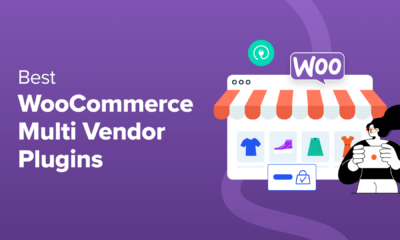TECHNOLOGY
Smarter Machines = Smarter Humans

The ability of machines to communicate—and their increasing intelligence—is an exponentially accelerating trend spanning many industries.
This trend is not slowing down in any way, and the more it is adopted, the more it will continue to accelerate, transforming our personal, professional, and social lives.
Machines communicating with other machines really means next to nothing without a human being in the equation. Whether an individual works with this technology at their place of business or benefits from it by way of everyday conveniences, intelligent technology already touches all our lives today in some capacity.
But if you are an avid reader of my blog, you know that nothing stands still in this digitally disruptive world for long. So, here’s the question I always ask: Where are we headed next with intelligent software, machines, and their impact on our lives?
The Internet of Things Defined
Machine intelligence and machine communication are more easily defined as the Internet of Things (IoT), more commonly known today as the Internet of Life. IoT has the powerful ability to simplify daily tasks, make things safer, and enhance our lives overall, and much of it is a result of the collection of personal data.
Using this data, machines follow a series of algorithms to “learn” from your habits. At its beginning, IoT-based technology was pretty simplistic — John or Jane Smith enjoys a certain product from Store A, and whether they Googled it on their smartphone or posted about it on Facebook, that data was recognized by the individual’s smartphone, thus targeting ads toward them during their screen time.
As IoT applications evolved, soon this elementary implementation of smart software became commonplace, and before long we started to see Smart Home software and hardware, which allowed you to interact with your devices via voice recognition. Now, IoT applications can recognize your voice and your habits, and this once-revolutionary breakthrough is now as common as having a microwave in your kitchen and a TV in your bedroom.
IoT and TSA: Facial Recognition Software Speeding Things Along
Perhaps you are familiar with Smart Homes and the seamless experience offered by this personalized technology. However, you may be less aware of a huge development in the IoT space that promises to transform an extremely agitating travel rigor — making it just as easy as your smart fridge letting you know you are low on milk.
Clear — a company that has developed software and hardware that uses your eyes and fingerprints to verify your identity — is now found in over 40 airports in the United States, checking registered guests more quickly than any TSA pre-check line can move. Instead of the traditional way to move through security when flying nationally or internationally, Clear has created a system that eliminates a step from the process — checking IDs — using my Skip It Principle.
This company is also acting in an Anticipatory fashion at the time of this writing, as they are in the process of rolling out smart device applications that create a virtual ID for many other circumstances, such as verifying that you are of legal drinking age or checking in at hotels before you ever arrive.
Finding Your Place in Tech Now and in the Future
It’s possible that Clear’s IoT is striking fear in the hearts of TSA agents. A TSA agent reading this may be thinking: “But what if I can’t invent something to disrupt Clear or the applications replacing my career? How can I still anticipate and stay ahead of the curve?”
It is human nature to dread the unknown. This primordial apprehension is often the result of overthinking what we cannot fully prove to be a non-threatening occurrence. Time and again, however, these fears prove irrational once we know what to expect. In other words, hindsight is 20/20.
Using an Anticipatory Mindset helps with this uncovering process, and the first part of that process is always figuring out what exactly is behind something you are unsure about — to lift the veil of mystery.
The TSA agent’s fear is certainly warranted, especially since IoT, artificial intelligence, machine learning, and communication between devices eliminate nominal tasks that may make up the entirety of a person’s role at an organization.
Transformation Will Never Stop, and It Shouldn’t Stop You!
My advice to all of you feeling this apprehension is to constantly stay educated. Getting a firm grasp on disruptive digital transformations — such as machine intelligence, the Internet of Things, and communication between devices — allows you to more easily find your professional and personal place in the equation.
But because of how quickly changes happen once a disruptive digital technology takes hold, learning something once and then tabling it is not the answer.
The rapid acceleration of intelligent machines and software means that new opportunities that come with these technologies are everywhere and are moving even faster, and you need to use your human competencies in critical thinking and continuing education to be the smartest in the equation.
What you must do is start with my Hard Trend Methodology to deduce exactly what the opportunity is and pre-solve the problems you may face, so all that is left once you have leveraged a digital disruption is a positive, transformative result that impacts your customers, your industry, and humanity for the better.
Source link
TECHNOLOGY
Next-gen chips, Amazon Q, and speedy S3

AWS re:Invent, which has been taking place from November 27 and runs to December 1, has had its usual plethora of announcements: a total of 21 at time of print.
Perhaps not surprisingly, given the huge potential impact of generative AI – ChatGPT officially turns one year old today – a lot of focus has been on the AI side for AWS’ announcements, including a major partnership inked with NVIDIA across infrastructure, software, and services.
Yet there has been plenty more announced at the Las Vegas jamboree besides. Here, CloudTech rounds up the best of the rest:
Next-generation chips
This was the other major AI-focused announcement at re:Invent: the launch of two new chips, AWS Graviton4 and AWS Trainium2, for training and running AI and machine learning (ML) models, among other customer workloads. Graviton4 shapes up against its predecessor with 30% better compute performance, 50% more cores and 75% more memory bandwidth, while Trainium2 delivers up to four times faster training than before and will be able to be deployed in EC2 UltraClusters of up to 100,000 chips.
The EC2 UltraClusters are designed to ‘deliver the highest performance, most energy efficient AI model training infrastructure in the cloud’, as AWS puts it. With it, customers will be able to train large language models in ‘a fraction of the time’, as well as double energy efficiency.
As ever, AWS offers customers who are already utilising these tools. Databricks, Epic and SAP are among the companies cited as using the new AWS-designed chips.
Zero-ETL integrations
AWS announced new Amazon Aurora PostgreSQL, Amazon DynamoDB, and Amazon Relational Database Services (Amazon RDS) for MySQL integrations with Amazon Redshift, AWS’ cloud data warehouse. The zero-ETL integrations – eliminating the need to build ETL (extract, transform, load) data pipelines – make it easier to connect and analyse transactional data across various relational and non-relational databases in Amazon Redshift.
A simple example of how zero-ETL functions can be seen is in a hypothetical company which stores transactional data – time of transaction, items bought, where the transaction occurred – in a relational database, but use another analytics tool to analyse data in a non-relational database. To connect it all up, companies would previously have to construct ETL data pipelines which are a time and money sink.
The latest integrations “build on AWS’s zero-ETL foundation… so customers can quickly and easily connect all of their data, no matter where it lives,” the company said.
Amazon S3 Express One Zone
AWS announced the general availability of Amazon S3 Express One Zone, a new storage class purpose-built for customers’ most frequently-accessed data. Data access speed is up to 10 times faster and request costs up to 50% lower than standard S3. Companies can also opt to collocate their Amazon S3 Express One Zone data in the same availability zone as their compute resources.
Companies and partners who are using Amazon S3 Express One Zone include ChaosSearch, Cloudera, and Pinterest.
Amazon Q
A new product, and an interesting pivot, again with generative AI at its core. Amazon Q was announced as a ‘new type of generative AI-powered assistant’ which can be tailored to a customer’s business. “Customers can get fast, relevant answers to pressing questions, generate content, and take actions – all informed by a customer’s information repositories, code, and enterprise systems,” AWS added. The service also can assist companies building on AWS, as well as companies using AWS applications for business intelligence, contact centres, and supply chain management.
Customers cited as early adopters include Accenture, BMW and Wunderkind.
Want to learn more about cybersecurity and the cloud from industry leaders? Check out Cyber Security & Cloud Expo taking place in Amsterdam, California, and London. Explore other upcoming enterprise technology events and webinars powered by TechForge here.
TECHNOLOGY
HCLTech and Cisco create collaborative hybrid workplaces

Digital comms specialist Cisco and global tech firm HCLTech have teamed up to launch Meeting-Rooms-as-a-Service (MRaaS).
Available on a subscription model, this solution modernises legacy meeting rooms and enables users to join meetings from any meeting solution provider using Webex devices.
The MRaaS solution helps enterprises simplify the design, implementation and maintenance of integrated meeting rooms, enabling seamless collaboration for their globally distributed hybrid workforces.
Rakshit Ghura, senior VP and Global head of digital workplace services, HCLTech, said: “MRaaS combines our consulting and managed services expertise with Cisco’s proficiency in Webex devices to change the way employees conceptualise, organise and interact in a collaborative environment for a modern hybrid work model.
“The common vision of our partnership is to elevate the collaboration experience at work and drive productivity through modern meeting rooms.”
Alexandra Zagury, VP of partner managed and as-a-Service Sales at Cisco, said: “Our partnership with HCLTech helps our clients transform their offices through cost-effective managed services that support the ongoing evolution of workspaces.
“As we reimagine the modern office, we are making it easier to support collaboration and productivity among workers, whether they are in the office or elsewhere.”
Cisco’s Webex collaboration devices harness the power of artificial intelligence to offer intuitive, seamless collaboration experiences, enabling meeting rooms with smart features such as meeting zones, intelligent people framing, optimised attendee audio and background noise removal, among others.
Want to learn more about cybersecurity and the cloud from industry leaders? Check out Cyber Security & Cloud Expo taking place in Amsterdam, California, and London. Explore other upcoming enterprise technology events and webinars powered by TechForge here.
TECHNOLOGY
Canonical releases low-touch private cloud MicroCloud

Canonical has announced the general availability of MicroCloud, a low-touch, open source cloud solution. MicroCloud is part of Canonical’s growing cloud infrastructure portfolio.
It is purpose-built for scalable clusters and edge deployments for all types of enterprises. It is designed with simplicity, security and automation in mind, minimising the time and effort to both deploy and maintain it. Conveniently, enterprise support for MicroCloud is offered as part of Canonical’s Ubuntu Pro subscription, with several support tiers available, and priced per node.
MicroClouds are optimised for repeatable and reliable remote deployments. A single command initiates the orchestration and clustering of various components with minimal involvement by the user, resulting in a fully functional cloud within minutes. This simplified deployment process significantly reduces the barrier to entry, putting a production-grade cloud at everyone’s fingertips.
Juan Manuel Ventura, head of architectures & technologies at Spindox, said: “Cloud computing is not only about technology, it’s the beating heart of any modern industrial transformation, driving agility and innovation. Our mission is to provide our customers with the most effective ways to innovate and bring value; having a complexity-free cloud infrastructure is one important piece of that puzzle. With MicroCloud, the focus shifts away from struggling with cloud operations to solving real business challenges” says
In addition to seamless deployment, MicroCloud prioritises security and ease of maintenance. All MicroCloud components are built with strict confinement for increased security, with over-the-air transactional updates that preserve data and roll back on errors automatically. Upgrades to newer versions are handled automatically and without downtime, with the mechanisms to hold or schedule them as needed.
With this approach, MicroCloud caters to both on-premise clouds but also edge deployments at remote locations, allowing organisations to use the same infrastructure primitives and services wherever they are needed. It is suitable for business-in-branch office locations or industrial use inside a factory, as well as distributed locations where the focus is on replicability and unattended operations.
Cedric Gegout, VP of product at Canonical, said: “As data becomes more distributed, the infrastructure has to follow. Cloud computing is now distributed, spanning across data centres, far and near edge computing appliances. MicroCloud is our answer to that.
“By packaging known infrastructure primitives in a portable and unattended way, we are delivering a simpler, more prescriptive cloud experience that makes zero-ops a reality for many Industries.“
MicroCloud’s lightweight architecture makes it usable on both commodity and high-end hardware, with several ways to further reduce its footprint depending on your workload needs. In addition to the standard Ubuntu Server or Desktop, MicroClouds can be run on Ubuntu Core – a lightweight OS optimised for the edge. With Ubuntu Core, MicroClouds are a perfect solution for far-edge locations with limited computing capabilities. Users can choose to run their workloads using Kubernetes or via system containers. System containers based on LXD behave similarly to traditional VMs but consume fewer resources while providing bare-metal performance.
Coupled with Canonical’s Ubuntu Pro + Support subscription, MicroCloud users can benefit from an enterprise-grade open source cloud solution that is fully supported and with better economics. An Ubuntu Pro subscription offers security maintenance for the broadest collection of open-source software available from a single vendor today. It covers over 30k packages with a consistent security maintenance commitment, and additional features such as kernel livepatch, systems management at scale, certified compliance and hardening profiles enabling easy adoption for enterprises. With per-node pricing and no hidden fees, customers can rest assured that their environment is secure and supported without the expensive price tag typically associated with cloud solutions.
Want to learn more about cybersecurity and the cloud from industry leaders? Check out Cyber Security & Cloud Expo taking place in Amsterdam, California, and London. Explore other upcoming enterprise technology events and webinars powered by TechForge here.
-

 MARKETING7 days ago
MARKETING7 days agoEffective Communication in Business as a Crisis Management Strategy
-

 SEO6 days ago
SEO6 days agobrightonSEO Live Blog
-

 SEO5 days ago
SEO5 days agoGoogle March 2024 Core Update Officially Completed A Week Ago
-

 WORDPRESS5 days ago
WORDPRESS5 days ago9 Best WooCommerce Multi Vendor Plugins (Compared)
-
SEARCHENGINES6 days ago
Daily Search Forum Recap: April 25, 2024
-

 WORDPRESS7 days ago
WORDPRESS7 days agoYour New Favorite Way to Develop WordPress Locally – WordPress.com News
-

 SEARCHENGINES5 days ago
SEARCHENGINES5 days agoGoogle March 2024 Core Update Finished April 19, 2024
-
![The Current State of Google’s Search Generative Experience [What It Means for SEO in 2024] person typing on laptop with](https://articles.entireweb.com/wp-content/uploads/2024/04/The-Current-State-of-Googles-Search-Generative-Experience-What-It.webp-400x240.webp)
![The Current State of Google’s Search Generative Experience [What It Means for SEO in 2024] person typing on laptop with](https://articles.entireweb.com/wp-content/uploads/2024/04/The-Current-State-of-Googles-Search-Generative-Experience-What-It.webp-80x80.webp) MARKETING5 days ago
MARKETING5 days agoThe Current State of Google’s Search Generative Experience [What It Means for SEO in 2024]
















You must be logged in to post a comment Login